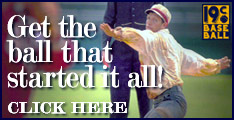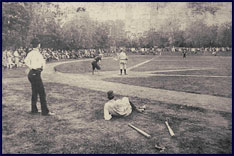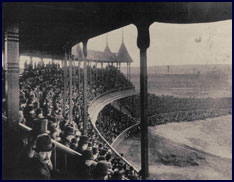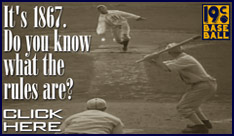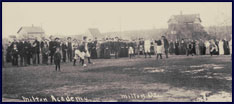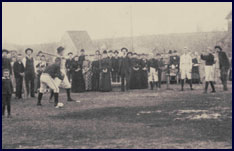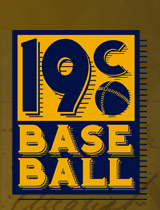Evolution of 19th Century Baseball Rules (Continued)
1863
The umpires are allowed to call unfair pitched balls. After a warning is given the batter takes his base after three called balls.
All base runners advance one base, regardless of being forced or not, when the batter receives his base on called balls.
1865
Fair hit balls must be caught on the fly. Foul balls may still be caught on the fly or the first bound.
1867
The batter is not allowed to step forward or backward when striking at the ball.
1868
The batter is allowed to only step forward when striking at the ball.
1869
After the striker receives his base on called balls, only base runners that are forced to, move one base.
1870
The first pitched ball is not to be called.
1871
The National Association of Base-Ball Players begins play and is the first professional baseball league in the United States. The last year of operation would be 1875.
The striker may call for a low or high pitched ball. A "low ball" is ball that is a fair ball that is between the knees and the waist of the striker. A "high ball" is a ball that is a fair ball that is between the striker's waist and shoulders.
The striker is permitted to overrun first base provided that he returns without attempting to run to second.
1872
"Unfair" balls are identified as any ball that is delivered over the striker's head, hit the ground in front of home base, delivered to the opposite side that the batter strikes from or come within one foot of the batter. These types of pitches are required to be called in the order they are delivered after the first ball is pitched.
1876
The National League becomes the second professional baseball league in the United States. It is still in existence today.
The umpire was allowed, during the game, to ask a bystander whether a catch had been fairly made before rendering a decision.
1877
If a batted ball strikes a base runner, while not occupying a base, he is declared out.
1879
After the first inning the first batsman of subsequent innings shall be the striker who follows the last batter to complete a time at bat.
1880
The home team no longer had to bat in the bottom of the ninth inning if they had more runs than their opponent.
1882
The American Association is formed. It would operate until 1891 and then be absorbed and combined with the National League.
1883
National League - A foul ball must be caught on the fly to put the batsman out.
American Association - Foul balls are allowed to be caught on the fly or first bound to retire the batter.
The Rules of the Game: A Compilation of the Rules of Baseball 1845–1900 ![]()
